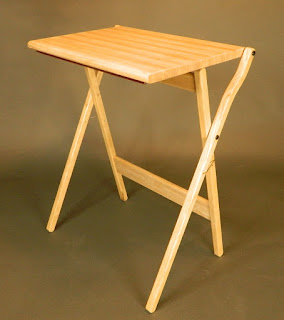 |
| Barrel Nuts vs Square Nuts? |
A classic solution to bolt wood parts together is to use a barrel nut (aka cross dowel) to insert threads for bolts to thread into. Using a drill press you can make a perfect hole for the barrel nut. Barrel nuts are relatively pricey compared to standard hex or square nuts. If you have a CNC though it is possible to embed square nuts for threads rather than barrel nuts. The pocket for a square nut can be made with a 1/8" spiral upcut router bit. An optimum shape for such a pocket can be found using these drafting steps:
 |
| Making a pocket for a square nut. |
From left to right in the image above:
1. Know the dimensions of your nut. A digital caliper is a handy tool to keep near your CNC.
2. The critical shape to use is the top rectangular view of the nut.
3. In each corner draw a circle the diameter of the bit you'll be using. I usually use a 1/8"d spiral upcut bit.
4. Draw in the diagonal lines from corner to opposing corner.
5. Where the diagonal lines cross the initial circles, center another 1/8" circle.
6. You can delete the diagonal lines and initial corner circles.
7. Trim away the inner sections of each circle, and the corner of the rectangle where they cross the circle line.
Make sure all the vectors are joined, and you've got a vector shape you can pocket out to sink that square nut into. Although my software (Aspire from Vectric.com) has a dogbone tool it doesn't make corners optimized to leave the most flat surface for the nut. These steps do.
I buy square nuts from McMaster Carr. I prefer using stainless steel nuts as they won't rust if the wood has a high moisture content.
To cover the square nut a simpler rounded rectangle shape pocket above the nut can be filled with a CNC cut plug. One example of an inserted square nut:
 |
| Embedded Square Nut |
I've seen many CNC cut slots made to access hex nuts in plywood or other sheet goods. In most there is a little room around the nut for the tips of needle nosed plyers to keep the nut from spinning while tightening or loosening the connection. Using a square nut and a snug fitting CNC cut pocket the nut won't spin. A side benefit is that you won't have to worry about the orientation of the nut. Using barrel nuts you do. 4D




































